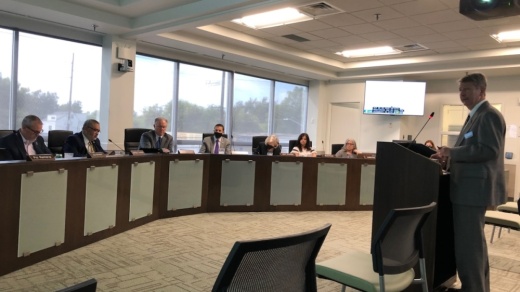As a part of that growth, the Capital Metro board approved $50 million in funding for MetroRapid infrastructure projects during its Oct. 25 meeting. Those infrastructure projects include the addition of 106 new stations over the next three to four years, as well as new park and rides at Expo Center, Goodnight Ranch and McKinney Falls.
“For the MetroRapid projects, they are part of Project Connect, which is being implemented by the Austin Transit Partnership; however, for the MetroRapid projects and some of the Red Line regional rail projects, Capital Metro will actually be taking the lead in implementing projects,” said Ken Cartwright, Capital Metro’s vice president of facilities and construction.
Capital Metro has two MetroRapid lines, which run from Tech Ridge to Southpark Meadows (Route 801) and from the Domain to the Westgate Transit Center (Route 803). As a part of Project Connect, Route 803 would extend to Oak Hill and Menchaca.
The massive transit program would add three new routes, which include the Pleasant Valley route from Mueller to the Goodnight Ranch Park & Ride, and the Expo Center route from East Austin to the University of Texas and downtown. Those projects have an anticipated completion of 2023, according to Capital Metro documents.
It also would add a Gold Line from Austin Community College’s Highland campus to Republic Square. That segment could eventually be converted to a light rail line, according to the Project Connect website.
In addition to the new stations and park and rides, the project will also include electric bus charging stations, improvements to existing bus stops and transit hubs.
“We're also going to be building electric charging stations, so in addition to the ability to charge the electric buses at the facility, we also need to have charging infrastructure on route,” Cartwright said.
Who decides what on Project Connect
The vote also brought up procedural questions around which government agency has the authority to make Project Connect decisions.
Three government agencies play a part in the execution of the large-scale project: Capital Metro, the city of Austin and the Austin Transit Partnership. To solidify the decision-making process, the three governing bodies are in the process of creating a joint powers agreement.
After questions about the project’s safety oversight were raised during public comment, Council Member Ann Kitchen, who also serves on the Capital Metro board, said that she wanted to ensure the vote followed the correct procedure and raised concerns about voting in advance of the joint powers agreement’s approval.
“My question today is a process question, because we're taking this out of order,” Kitchen said. “I thought it was an easy thing to add, for all of us to say ‘Well, yeah of course, we're going to comply with the decision of the three boards.’”
Other board members said that Capital Metro already had the authority to make decisions, such as approving the MetroRapid funding.
“The voters have already decided, and if we're talking about trying to re-legislate the contract with the voters, [that] also concerns me, because the voters voted over 50-plus percent to pass the thing and proceed in the first place,” Capital Metro Board Member Eric Stratton said.
Capital Metro, the Austin Transit Partnership and the Austin City Council are scheduled to vote on the joint partnership agreement during a joint meeting Oct. 29.





